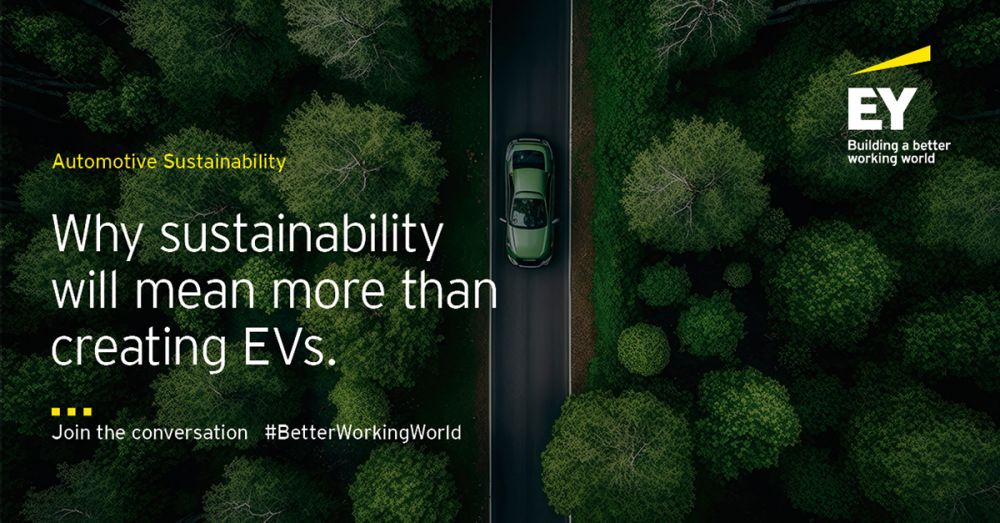Embracing the sustainability challenge
Decarbonization is only the first step in the global automotive industry’s sustainability transformation.

It has never been just about making vehicles. From the beginnings of the automotive industry, the winners were companies that thought bigger, whether that meant the moving assembly line, building a car for the masses, lifecycle marketing or just-in-time inventory management.
A good case can be made that history will repeat itself now, as carbon-free transportation becomes the norm. The power train is not in dispute. Instead, competition will focus elsewhere as the industry transforms from a sector that just builds vehicles to one that delivers sustainability solutions that add value across the entire ecosystem — from the factory floor to the consumer to society as a whole.
An industry in transition
Electrification is on the way. Every major OEM has an aggressive electric strategy. Standard & Poor’s estimates that by 2025, more than US$250 billion will be invested in the conversion worldwide, with at least one major marque (Jaguar) pledging to go to 100% electric production, and another (GM) introducing 30 new electric models across the globe.[1]
However, this is only the beginning. True sustainability will require the automotive industry to do more than build and sell emission-free vehicles. It will mean making a commitment to a wide range of environmental, social and governance (ESG) goals, from protecting the environment to safeguarding the rights and dignity of people everywhere, and then pursuing those goals with intensity and an innovative mindset.
Moving beyond product focus
The automotive industry is undergoing unprecedented changes. The old paradigm of maximizing vehicle production at the lowest cost is no longer a workable model. Automotive leaders need to consider the impacts of their enterprise beyond the walls of their factories. This will require change and a major evolution in the mindset, one that holds a sustainability lens to every decision and challenges existing paradigms and assumptions. How do you transform your legacy automotive business from one whose main focus is profitability, to one that is sustainably profitable? The entire industry is grappling with this question and it’s not going to go away. So how can your business succeed with both imperatives?
- Have a mindset that sustainability drives profitability. In the end, the less sustainable you are, the less efficient. Whether it’s exhaust from a tailpipe or a group that may have been overlooked for training in the past, non-sustainable practices miss a variety of valuable opportunities. Often, uncovering that value begins with a question. You might ask procurement, for example, if there is a way to ensure that the leather you source from Brazil isn’t contributing to the destruction of the rainforest.
- Lead from the front. Rather than simply responding to regulations and competitors, it’s important to think ahead about the needs of your consumers, employees, investors and regulators, and then become the company your stakeholders will need you to be. As the past 50 years of the automotive industry have demonstrated, the companies that thrive are those that embrace change before changes are forced on them.
- Commit to and be accountable for your objectives. To drive change on a global scale, automotive giants will need to find ways to embed sustainability principles into every aspect of the business — from procurement to product design and consumer engagement. Often, we see business functions operating at cross-purposes because the entire organization isn’t focused on the same goal. We have seen automotive companies wherein the C-suite makes a commitment to convert to 100% sustainable energy by 2030 only to learn shortly thereafter that procurement has just signed a deal to buy nonrenewable energy for the next five years.
These changes will not happen overnight. It will require a continuous improvement mindset. By fully embracing ESG principles, automotive leaders have an opportunity to create long-term value for their employees, their investors, their customers and our fragile planet.
“The views reflected in this article are the views of the author and do not necessarily reflect the views of the global EY organization or its member firms.”
How do you transform your legacy automotive business from one whose main focus is profitability to one that is equally committed to promoting sustainability? Learn more in EY’s recently release report “Why decarbonization alone won’t make automotive companies sustainable.”
[1] “Automakers race to an electric and net-zero future,” S&P Global Mobility website, https://www.spglobal.com/mobility/en/topic/electric-vehicle-trends.html, accessed May 2023.






